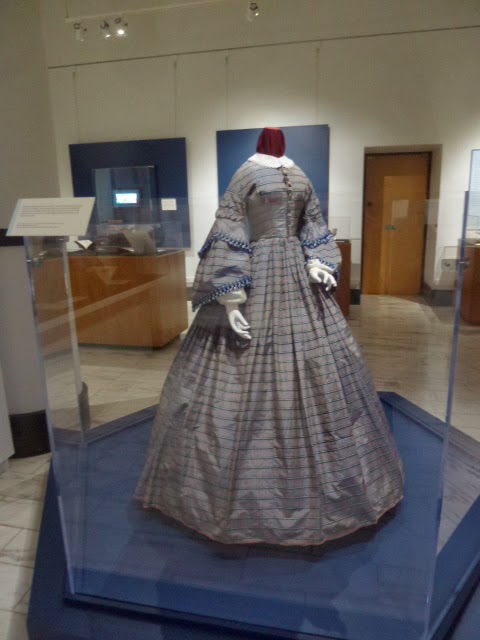(©Royal Pavilion and Museums, Brighton and Hove)
On Tuesday, September 9, 2014, The Wellington Tour will visit the Brighton Pavilion, and we hope you will come along. For all the details,
click here.The Royal Pavilion at Brighton
This fanciful building reflects the enigmatic character of the man for whom it was created, George, Prince of Wales, the Prince Regent from 1811-1820 and King George IV from 1820 to his death in 1830. Prinny, as he was often known, considered himself "The First Gentleman of Europe," and a connoisseur of all things tasteful and refined. And that was the paradox: He did indeed have good taste but he carried things to the extremes of excess.
James Gillray: A Voluptuary under the Horrors of Digestion, 1792
The British Museum
We will cover other aspects of the Pavilion and its fancies elsewhere. Today we want to discuss the Great Kitchen, built especially for the Prince's chefs who kept him and his minions well fed and produced brilliant banquets for his royal guests.
Guest in the Royal Kitchen
(©Royal Pavilion and Museums, Brighton and Hove)
More information on the Royal Kitchen is
here. The Prince Regent, was obsessed with all things French: architecture, décor, furniture, china, fashion, and "above all" French food. Once Great Britain had driven out Napoleon, the Prince Regent had to have a French Chef to prepare his meals and banquets in London at Carlton House and at his Brighton home, the Royal Pavilion. He sent his household Clerk Controller to Paris to find a chef. Even the Prince was surprised when the celebrated Antonin Carême agreed to come, probably for the offer of a very high salary. Carême had prepared elaborate meals for the notables of Napoleonic France, particularly the diplomat Talleyrand and the Emperor himself; Carême was the first "celebrity chef."
Cooking for Kings: The Life of Antonin Carême, the First Celebrity Chef
by Ian Kelly, a biography with recipes, 2003
Distinguished British writer and actor Ian Kelly is the author of Carême's biography. You can read more about Ian and his books
here. A chapter is devoted to Carême's brief but notable career in England. He arrived in July 1816, having left his wife and child in Paris. Carême certainly impressed the Prince's guests particularly with his elaborate, even ostentatious, confections, up to four feet tall.
Before Carême arrived, the Prince was already grossly overweight. Supposedly the Prince said that the temptations of his new chef's cooking would be the death of him. Carême replied, "Your highness, my concern is to tempt your appetite; yours is to curb it."
Touché!Marie-Antoine Carême (1784-1833)
Kelly had access to the records in the Royal Archive which include bills and notes from Careme's time. When he arrived from France, Carême altered the usual method of disposing of the extra food not eaten at the royal table. Previously the staff could sell leftovers, plus things like candles, and share the profits. Carême kept for himself the right to dispose of items from the kitchens. Thus he was quite unpopular with the staff. Kelly tells some wonderful stories about the conflicts. In late 1817, Carême returned to France.
(©Royal Pavilion and Museums, Brighton and Hove)
The kitchen as it appears today is only a part of the many rooms that were once used as bakeries, for supplies, preparation, sculleries, and so forth. Kelly found records showing in 1817, in one month, the kitchens took supply of 428 bunches of radishes, 153 Savoy Cabbages, 7 dozen Cos lettuces, and spent over £250 on 1,854 pounds of beef and similar amounts of mutton and veal.For a 360-degree view of the kitchen,
click here.
The Great Kitchen was built as part of the remodeling of the Marine Pavilion by architect John Nash. Intended to be a model of innovation, the kitchen had running water, steam heating and special ventilation through the high windows. The oriental theme used in varied versions throughout the palace is also found in the kitchen. Tall pillars supporting the ceiling are adorned with copper palm fronds.Nash water-colour of the Great Kitchen, 1828
The kitchen has been extensively renovated and visitors can see an impressive collection of on display of Regency-era and early Victorian kitchen equipment. As a matter of fact, some of the copper pots once belonged to Apsley House, the London residence of the Duke of Wellington.
In his excellent book, Ian Kelly reproduces the menu of 18 January, 1817, for a dinner for Grand Duke Nicholas of Russia: eight soups, eight releves de Poisson, fifteen Assiettes Volantes, eight grosses pieces, forty entrees, eight pieces montees, eight roasts thirty-two entremets, twelve assettes volantes." Kelly writes, "the banquet was to be seen and experiences as part of the theater of international relations -- Napoleon's chef creating a gastronomic spectacle for the conquering British monarch and his Russian allies." Excess indeed.
Kelly's conclusion is Carême's "...genius was to deploy methods that brought out the natural flavors of food to create a gourmand's paradise while at the same time producing a feast which would, visually live up to the most opulent settings." He would have been the superstar of the cable Food Channels!
(©Royal Pavilion and Museums, Brighton and Hove)










.jpg)

























